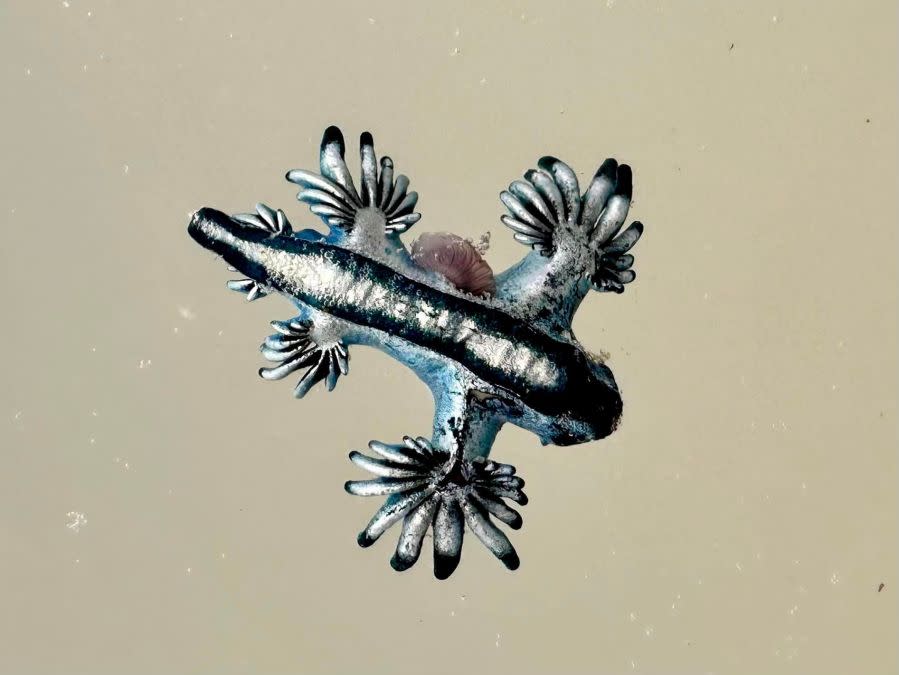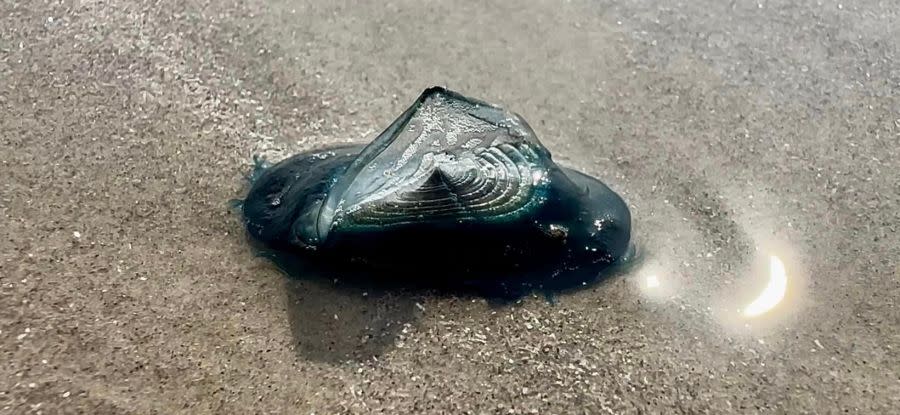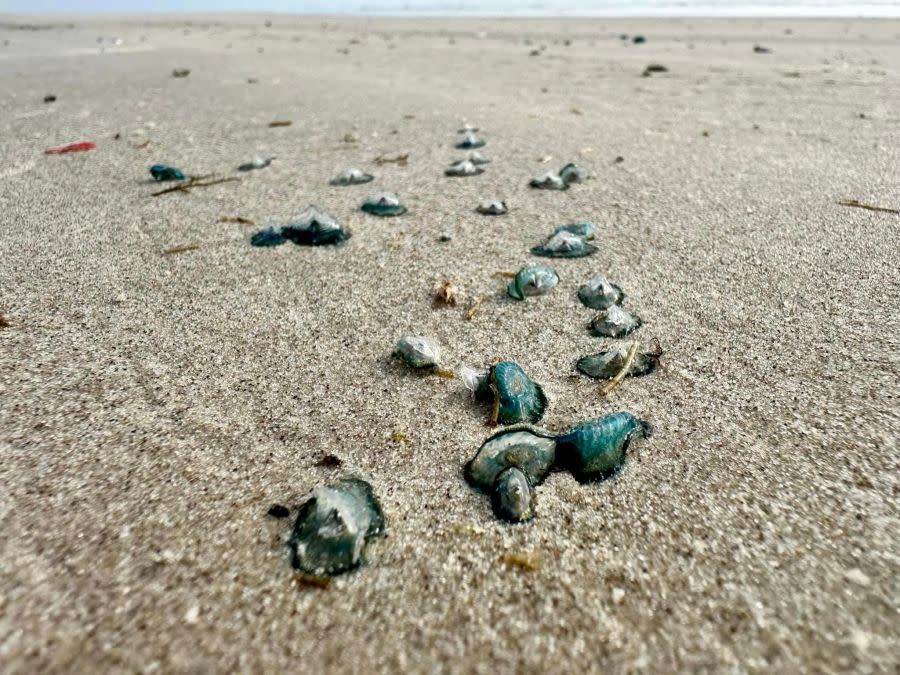Don’t touch! Rare blue dragons spotted washed up on Texas beach
NORTH PADRE ISLAND, Texas (KXAN) — Fantasy novels, shows and movies might have dragons, but so does one Texas beach… just not the same kind.
A rarely seen sea creature called the blue dragon was spotted awash on North Padre Island over the weekend.
‘Massive’ endangered American Eel washes up on Texas beach
The Harte Institute for Gulf of Mexico Studies posted photos and a warning on its Facebook page that beachgoers can look at the creatures but should not touch them because they can release powerful stings when touched.
Rarely seen blue dragon sea slug washes up at North Padre Island beach (Photo courtesy: Harte Research Institute for Gulf of Mexico Studies/Jace Tunnell) Rarely seen blue dragon sea slug washes up at North Padre Island beach (Photo courtesy: Harte Research Institute for Gulf of Mexico Studies/Jace Tunnell) Rarely seen blue dragon sea slug washes up at North Padre Island beach (Photo courtesy: Harte Research Institute for Gulf of Mexico Studies/Jace Tunnell)
The institute said each spring when Texas gets strong southeast winds, the beach gets a wave of man-o-wars, by the wind sailors and blue buttons as well as the organism that feeds on them — blue dragons.
The glaucus atlanticus sea slug, or blue dragon, is a pelagic nudibranch that sails on the surface of the ocean, according to the institute. They’re typically just an inch long but they feed on the toxins of much larger species like the Portuguese man-o-wars, which can have tentacles as long as 30 feet, the institute noted.
Here’s why researchers find so many ‘creepy’ items on Aransas beaches
When threatened or touched, the blue dragon can release stinging cells with more powerful stings than the Portuguese man o’ war can alone, the institute said.
Jace Tunnell of The Harte Institute for Gulf of Mexico Studies took photos of the blue dragons at North Padre Island on Sunday during the southeast winds over the weekend, the post noted.
For the latest news, weather, sports, and streaming video, head to KXAN Austin.



